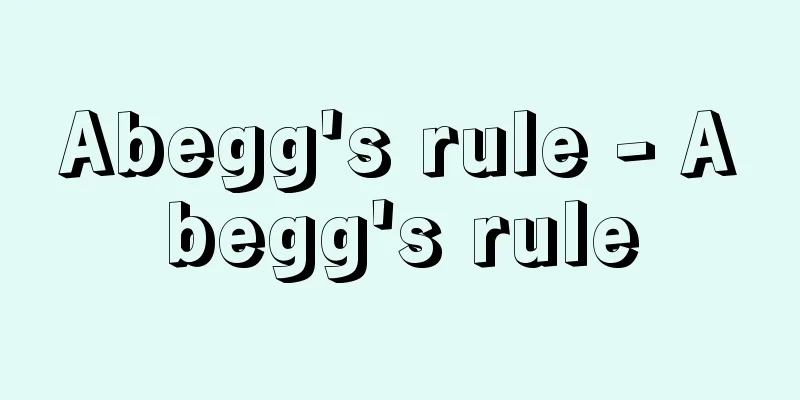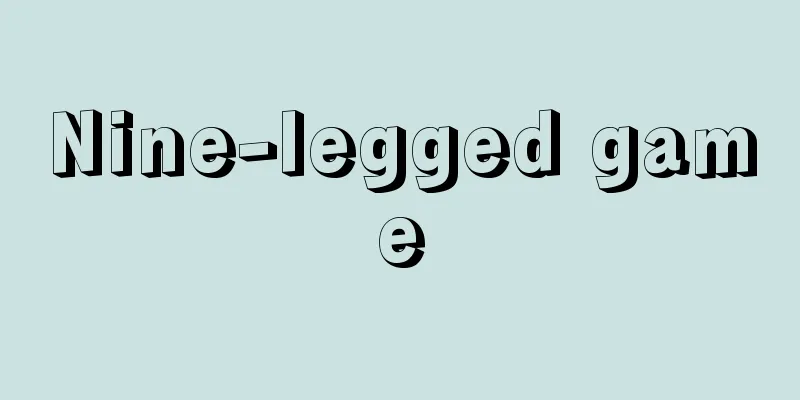Abegg's rule - Abegg's rule

|
This is the rule of atomic valence found in the periodic table, which was pointed out by Richard Abegg (1869-1910) of Germany in 1904. Specifically, when a positive element bonds with a positive charge and a negative element bonds with a negative charge, the normal valence is called the normal valence, and when the opposite is true, the inverse valence is called the inverse valence. The sum of the absolute values of the maximum normal and inverse valences is always 8. For example, the positive valence of chlorine is -1, but its inverse valence is +7, while the positive valence of sulfur is -2 and its inverse valence is +6, so the sum of the absolute values of these valences is 8. This is an important rule that shows that when electrons are involved in chemical bonds, the number 8 is important as the atomic valence or number of valence electrons of that atom ( ). [Nakahara Katsunori] [Reference] | | | | |©Shogakukan "> Rules for Couples (Table) Source: Shogakukan Encyclopedia Nipponica About Encyclopedia Nipponica Information | Legend |
|
周期表でみられる原子価の規則で、1904年ドイツのアベックRichard Abegg(1869―1910)によって指摘された。すなわち陽性元素が正電荷、陰性元素が負電荷で結合する場合を正常原子価としそれらの逆の場合を逆原子価としたとき、それらの正常原子価および逆原子価の最高値の絶対値の和はつねに8になる、というものである。たとえば塩素の正原子価は-1であるが、逆原子価は+7、硫黄の正原子価は-2、逆原子価は+6で、それらの原子価の絶対値の和は8である。このことは電子が化学結合に関与するとき、その原子の原子価または原子価電子の数として8が重要な意味をもつことを示すもととなった重要な規則である()。 [中原勝儼] [参照項目] | | | | |©Shogakukan"> アベックの規則〔表〕 出典 小学館 日本大百科全書(ニッポニカ)日本大百科全書(ニッポニカ)について 情報 | 凡例 |
Recommend
Arge pagana (English spelling)
… [Togashi Hajime]. … *Some of the terminology ex...
Kitakojima
An uninhabited island belonging to Iotorishima in ...
Alexandra Danilova
A Russian-born ballerina who was active in the Un...
Diagonal line restriction
This is one of the collective regulations for bui...
Art supplies - Gazai
〘noun〙① In painting, the materials used to paint a...
Carving knife
A large meat-cutting knife for the dining table, u...
Temple and shrine chanting
〘Noun〙 (also "jisha denso") One of the p...
Aegir (English spelling)
In Norse mythology, Aegir is the god of the sea. H...
Turmeric isomatsu - Turmeric isomatsu
A shrub-like perennial plant of the Plumageceae f...
Whisker - hoisukaa (English spelling) whisker
A needle-like crystal, also called a whisker or w...
Processed cotton fabric - Kakomenpu
…A general term for the industry that produces te...
Suga Scratching - Suga Scratching
A term used in Japanese music. It is used in vario...
Pineal gland
It is a pouch-like protrusion that extends upward...
Raiden Beach - Raiden Kaigan
This coast faces the Sea of Japan at the base o...
Ugyen Wangchuk (English spelling)
…By the Treaty of Sinchula in the same year, the ...









